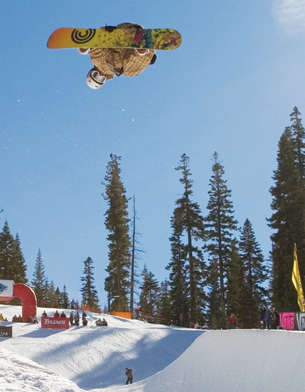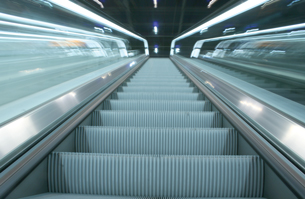Module 6—Work and Energy

© Joy Strotz/shutterstock
 Reflect and Connect
Reflect and Connect
Boarding down the half-pipe is an excellent example of energy transfers between potential energy and kinetic energy. With each jump, kinetic energy is converted to potential energy and then back again as the jump is landed. The process repeats itself as long as the rider has energy to continue, or until the bottom of the pipe is reached. This does not mean, however, that the mechanical energy is conserved. In fact, by the time the boarder reaches the bottom of the hill, he or she needs to have lost all the mechanical energy he or she had at the top of the hill. Therefore, this is a good example of a non-isolated system.
How do you think the snowboarder controls the rate at which potential energy is converted into kinetic energy?
How does the snowboarder ensure that all the mechanical energy he or she had, with respect to the top of the hill, has been lost?
What would happen to the snowboarder at the bottom of the hill if the mechanical energy were to be conserved—that is, if the half-pipe were frictionless?
Store the answers to these questions in your Physics 20 course folder.
 Discuss
Discuss

© salamanderman/shutterstock
What is the relationship between work and the conservation of mechanical energy? In an isolated system, total mechanical energy is conserved, with no energy leaving or entering the system. In a non-isolated system, energy can leave or enter, which means that work is being done. In the skiing and snowboarding examples shown in this lesson, energy was leaving the system as work done by friction.
In the discussion forum, describe a non-isolated system where energy “enters,” leading to an increase in mechanical energy. Describe how kinetic and potential energy can be transferred in the system and why work must be done to add energy to the system.
 Reflect on the Big Picture
Reflect on the Big Picture
Each of the Reflect on the Big Picture sections in this module will ask you to consider gravitational, frictional, or elastic forces. To help you consolidate your learning from this lesson, complete at least one of these reflection activities:
- Explain the physics idea of work to a Grade 6 student who is watching a construction crane hold a heavy box 6 m in the air. Do you expect that the student will be receptive to the idea that no work is being done on the box?
- Imagine what it would be like if you could bounce on a trampoline forever and there would never be any loss of energy. Since the eighth century, people have been working on perpetual motion machines. So far, no such machine has been built. Do you think such a machine will ever be built? Prepare a short list of problems that would have to be overcome.
Store your completed reflection in your Physics 20 course folder.
Add to the KWL chart you worked on in Module 5 and Lesson 1 of Module 6. The KWL chart is your Unit C Assignment. Continue to store your chart in your Physics 20 course folder.